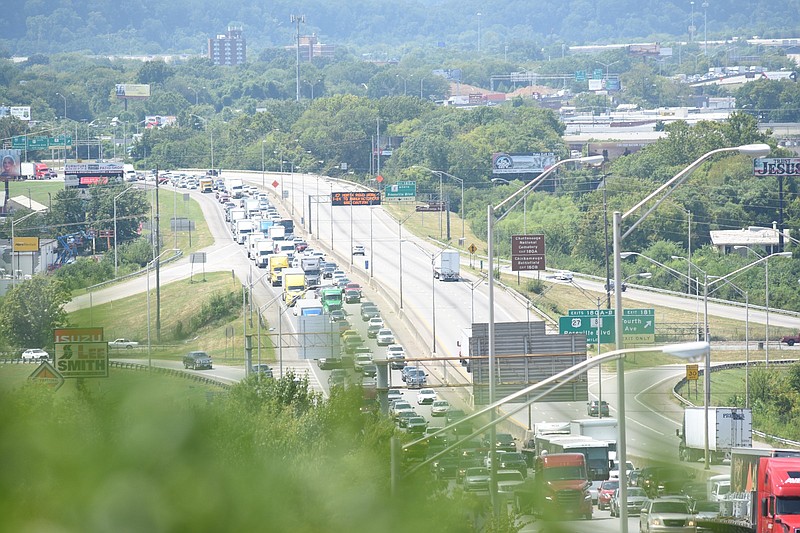A proposed future blueprint for part of Chattanooga that includes many of the city's urban neighborhoods drew mostly a thumbs up at a recent hearing, though worries arose over the steep slopes issue.
Nearly a dozen people, some of them on the Historic River-to-Ridge Area Plan advisory panel, spoke largely in favorable terms about the proposal to City Council members during a virtual hearing this week. The Council is expected to consider the draft plan on July 28.
After a nearly two-year effort, the plan created by the Chattanooga-Hamilton County Regional Planning Agency calls for preserving single-family homes, offering affordable housing, creating walkable village centers, improving parks and pedestrian links to them, and bettering transportation services.
The sprawling area bordered by the Tennessee River and Missionary Ridge encompasses 17 neighborhoods. It includes many of the city's traditional Black neighborhoods, and it historically has had one of the highest rates of unemployment in Hamilton County.
The area includes some major manufacturers which employ about 8,000 people, and many of the facilities are in close proximity to neighborhoods, the plan said.
Some of the neighborhoods are undergoing a resurgence as people look to move back into the central city.
Laura Jones, who spoke at a nearly hour-long public hearing Tuesday night, encouraged the plan's approval. She was critical, however, of a couple of proposed modifications including one involving steep slopes, which she said was suggested earlier by the Regional Planning Commission.
"They're predominately white men, developers and Realtors who stand to benefit from the decisions they make," Jones said. "It's not a reflective body of the city as far as demographics."
Karen Hundt, the RPA's director of community planning and design, said one of the modifications to the plan suggested by the Planning Commission involved an overlay that identified where land slopes over 25% and flood plains are located.
"They wanted to take those off the map," she said. "The staff felt it's helpful to us to have it on the map."
Last year, Chattanooga planners proposed an array of new rules related to so-called steep slopes to limit land erosion and damage amid the area's growth, saying they're trying to balance protection with private property rights.
But the Homebuilders Associations of Greater Chattanooga said many of its members view the proposals as "the most damaging regulatory changes to the building and construction industry in decades."
The sides are currently in discussions about the issue.
A second modification proposed by the Planning Commission dealt with the use of "place types," which Hundt said basically replaces land use maps in plans as well as discusses forms of development.
"We described how they'd be used," Hundt said. "There was a sentence that when reviewing a zoning request we'd use those and look at existing site conditions. The Planning Commission wanted to take out that sentence. They don't want place types to be used to review specific site conditions or site plans. They felt that was overreaching."
Everlena Holmes, who spoke at the public hearing, said she strongly supported the RPA recommendations over those made by the Planning Commission.
She said the Planning Commission may want to wait until the City Council acts on steep slopes.
"My question is 'Why wait?"' Holmes said. "We don't know how long the City Council will wait to address steep slopes."
Holmes also requested that the plan keep the RPA's place types language.
Janice Gooden, who said she lives in the area, called on finding partners with neighborhoods for some of the ideas mentioned in the plan.
She cited city government, investors, and corporations which would be "open and willing to be in a partnership."
Audrey McClure said she liked the plan, though she was "a little suspect" when the process began.
"But then I saw they took very specific ideas and listened to what the community and neighborhood association wanted," she said.
Contact Mike Pare at mpare@timesfreepress.com. Follow him on Twitter @MikePareTFP.
